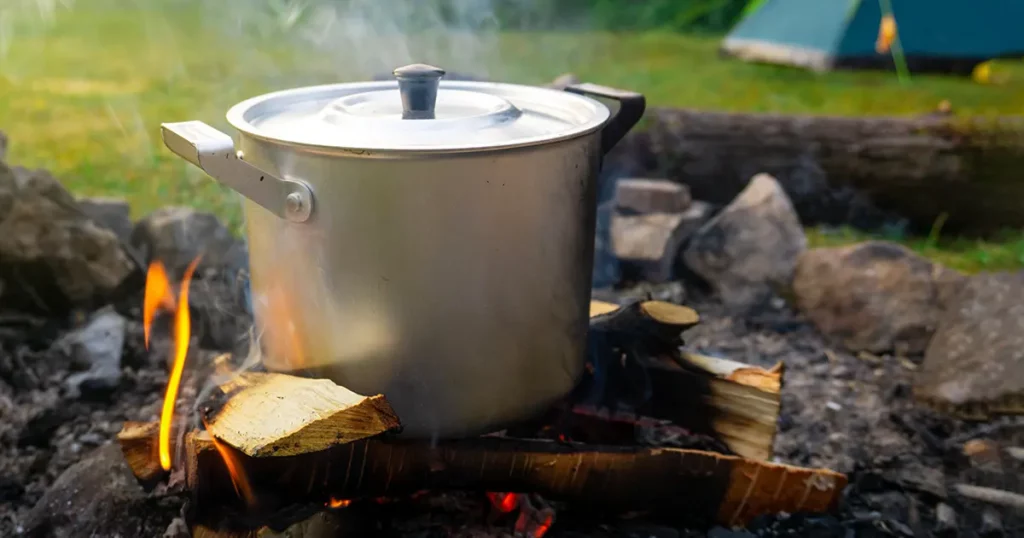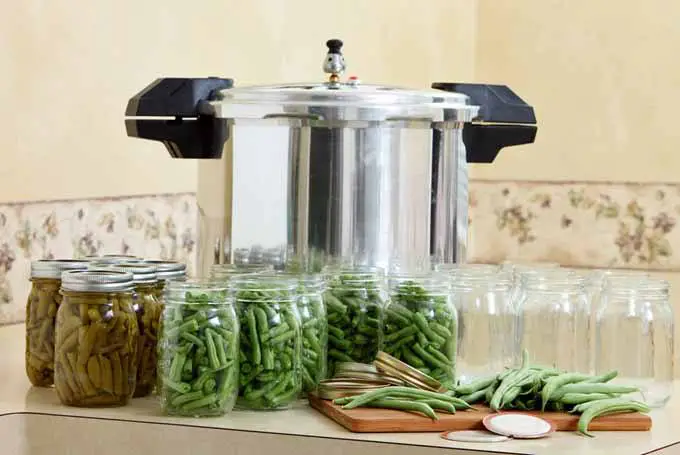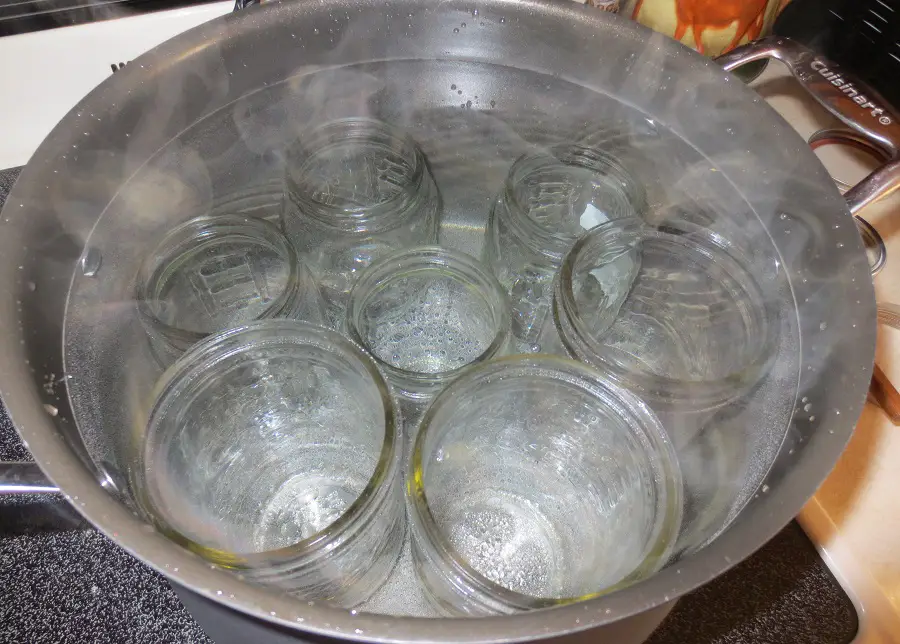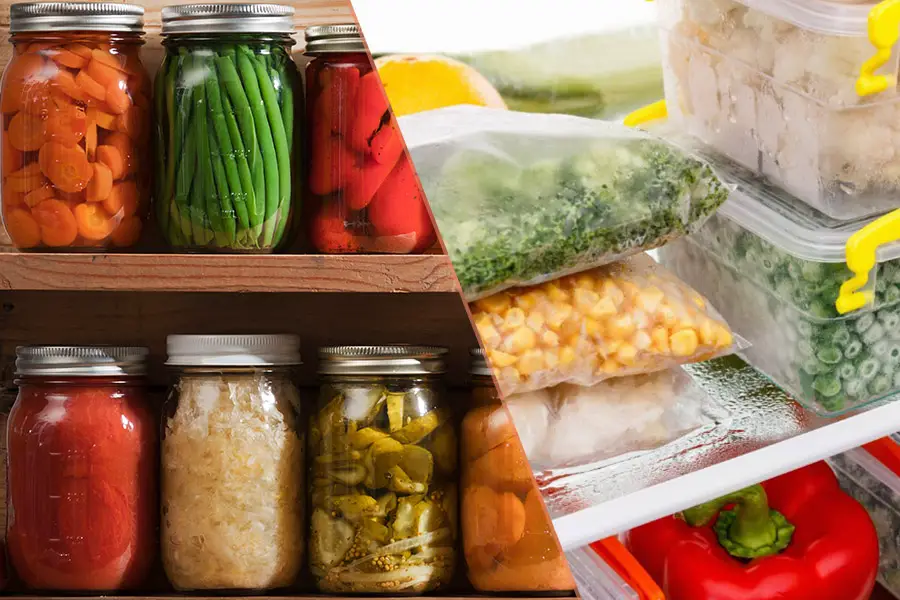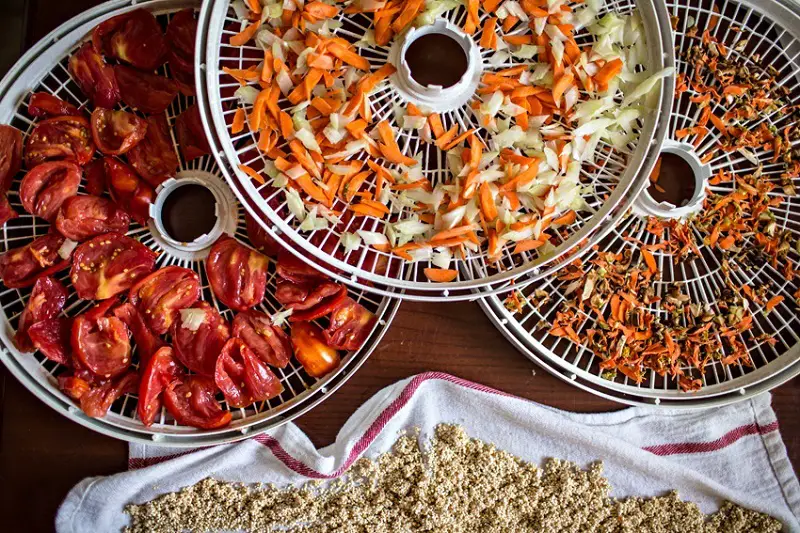Most pressure canning is done on a gas or electric stove in the kitchen, but did you know that there are other heat sources you can use for pressure canning? If the power goes out or your stove breaks, there are other options such as a propane burner or an open fire? Read on to know about pressure canning on an open fire.
Pressure canning on an open fire is an alternative for those that live off-grid, if your power happens to fail, or as a great skill to learn. Choosing the right pressure canner to use on an open fire is important, as not every pressure canner is designed to endure high temperatures. It depends on their construction materials and the number of plastic parts, among other factors. It is best to check your manual for the manufacturer’s recommendations.
As an example, the All American pressure canner is made of very thick and durable materials and is often recommended. Mirro and Presto’s manuals advise against high heat.
Table of Contents
Is Pressure Canning on an Open Fire Safe?
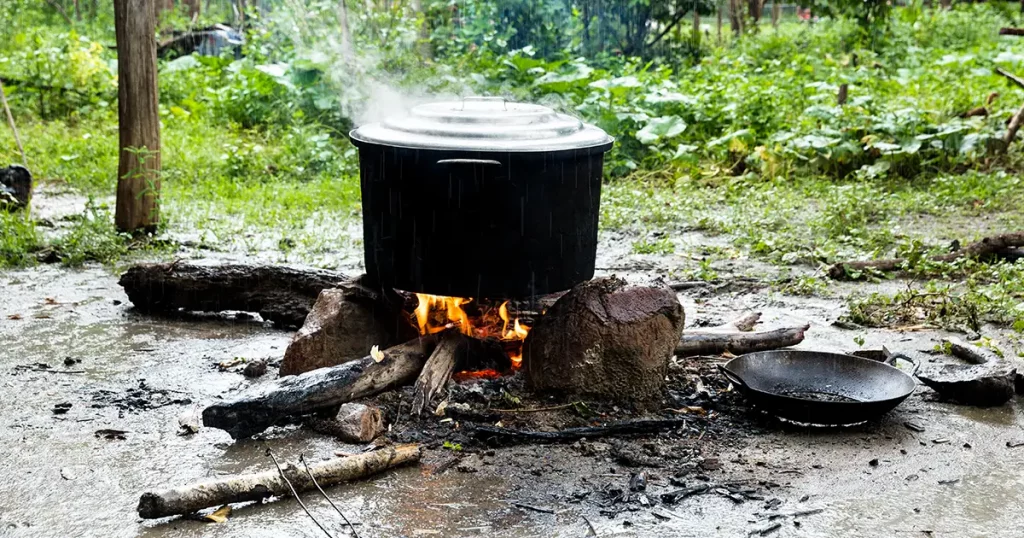
Many will tell you that pressure canning over an open fire is dangerous or just doesn’t work. Preppers and survivalists have had great success with this method. Using open fire for pressure canning has its challenges and will certainly not be the first choice of most people, or even mentioned in professional guidebooks.
We are presenting this as an alternative if you live off-grid, lose power, have a stove that is not working, or just want to learn a new skill.
Here are some potential downsides of pressure canning over an open fire:
- Challenging to keep the fire hot enough to keep a steady temperature.
- Difficult to regulate the pressure for long periods of time.
- Uses a LOT of wood.
- May be hard to move the heavy pressure canner on and off the heat source.
- More labor intensive to pressure can over an open fire, so enlist a helper.
- When pressure canning outside, the weather is always a concern.
Use all other safety precautions that you would use pressure canning indoors.
That being said, many people have mastered this skill and have even used it exclusively for all of their pressure canning needs. It is an old tradition that some have revived.
Choosing a Pressure Canner
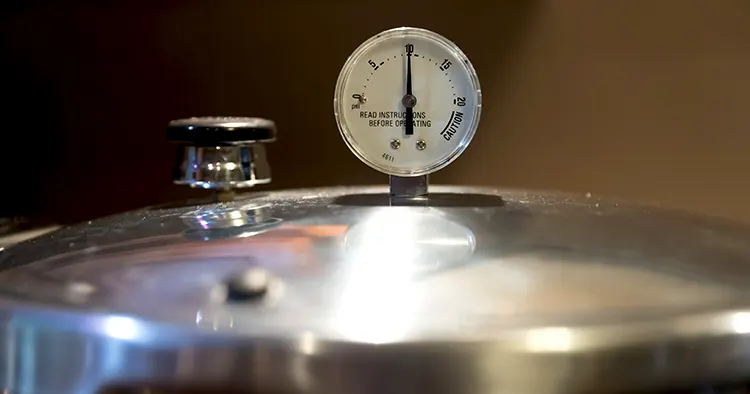
Check the manual! The manufacturer will have a warning or recommendation about the heat source to use when pressure canning. If you are purchasing a pressure canner for outdoor or open flame use and are unsure, go to the manufacturer’s website and click their contact us page and ask.
All American Pressure Canner
Your pressure canner must be heavy-duty. Many choose the All American pressure canners as they are durable and made of solid materials. A larger model is quite tall and holds a lot of jars. This is a plus when you are setting up a fire.
Presto and Mirro Pressure Canners
Presto and Mirro brands warn against using heat sources over 12,000 BTU – an open fire is way too hot and will warp the bottom of the pot. Mirro also states specifically to not use their cooker outdoors.
Other Pressure Canners
Keep in mind that your pressure canner, and any other pots you use on an open fire, are going to get black and sooty from the flames of the fire, so you might consider having a pressure canner and other pots dedicated to open fire cooking. Otherwise, you can scrub it well before using it inside again.
Before You Start
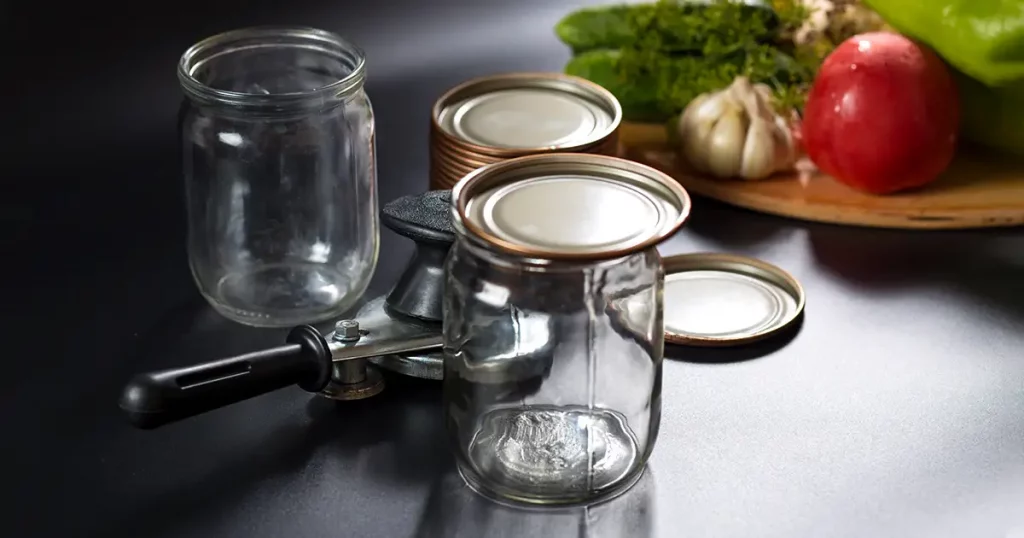
A proper setup and planning are important when pressure canning. I would encourage you to get familiar with water bath canning and pressure canning on the stove-top before you attempt pressure canning over an open fire. All of the safety precautions associated with “normal” pressure canning apply.
Some even recommend doing water-bath canning over an open fire before attempting pressure canning. It will get you used to how boiling water behaves.
Check the Weather
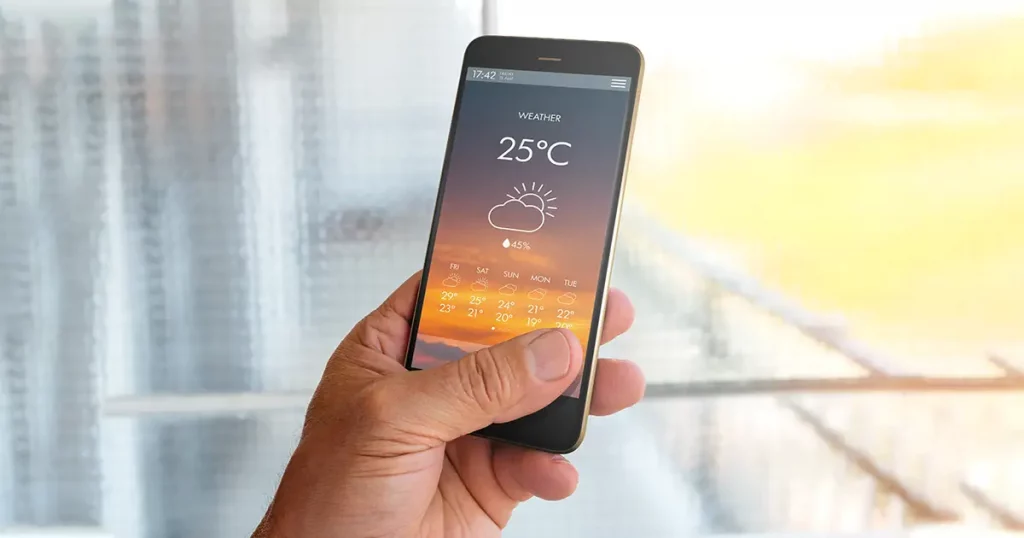
An open flame is affected by the weather. When pressure canning outside, you want a calm, sunny day that has little wind. The amount of breeze your flame can tolerate might depend on how protected your fire is from the elements. I will talk about fire setup in a minute. A chance of rain can put a real damper (literally) on your fire. A hot day can be pretty uncomfortable as you are dealing with a very hot fire.
Choose your Produce
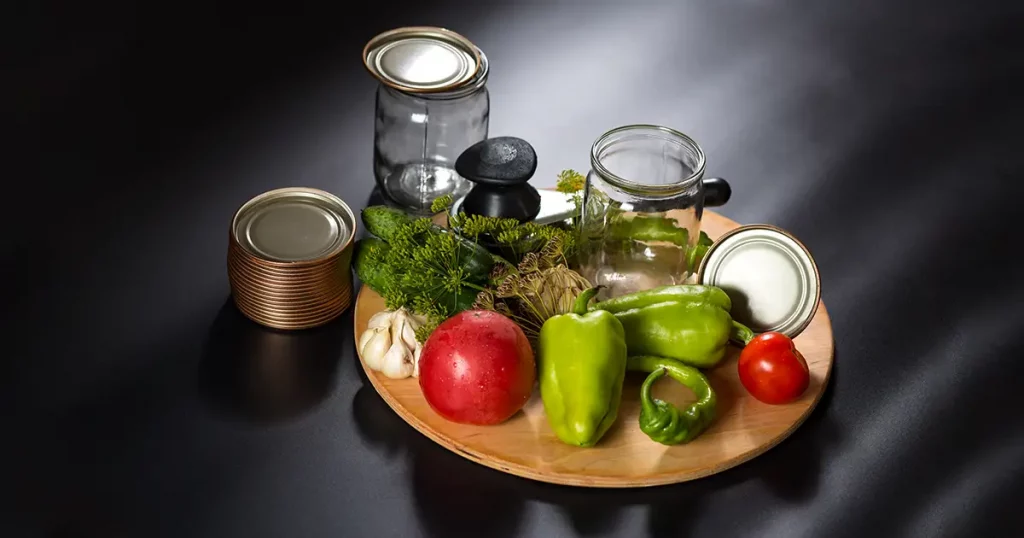
Until you are more comfortable with the process of feeding fire and regulating temperature, it is recommended that you choose something with a shorter processing time. It is easier to keep the pressure up for 20-25 minutes instead of the 50-60 minutes that is required for meats or beans. Consider your method of pressure canning as well. A raw pack is easier to prep when you are running from the kitchen to the fire source.
Have a Helper
Pressure canning over an open fire is more labor-intensive than pressure canning in your kitchen. It helps to have someone watch the fire while you, for example, run in the house to get the filled jars or other small tasks that having 2 people makes much easier.
Gather Your Supplies
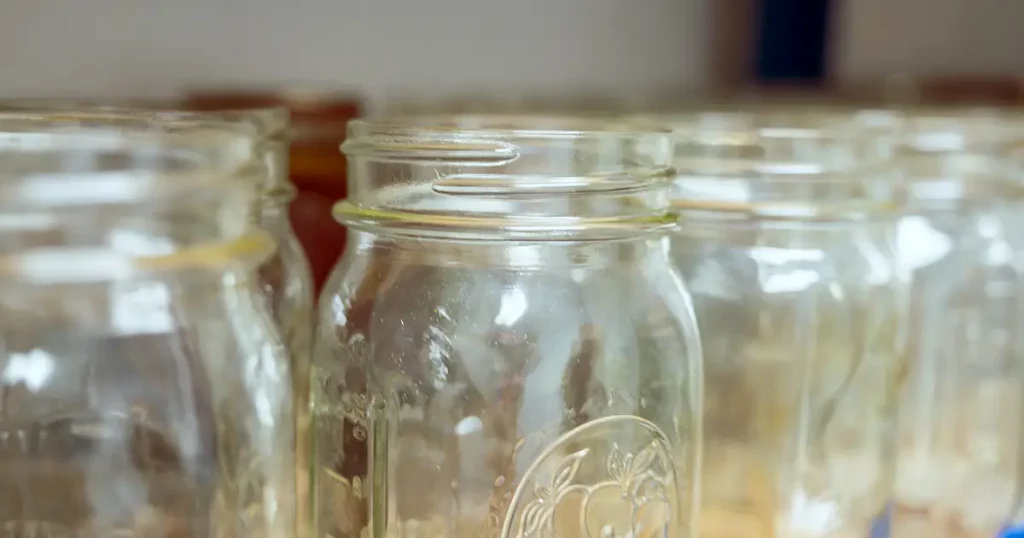
Just like pressure canning in your kitchen, the organization is key. Make sure you have your supplies gathered, jars washed, produce cut up, and know where all your tools are. You might prepare everything inside and then carry the jars out to the fire area. You want to make the whole process as easy as possible.
For open-flame cooking, you’ll want a good pair of heatproof gloves to prevent burns from the pot, grate, or the fire itself.
Set Up the Fire Area
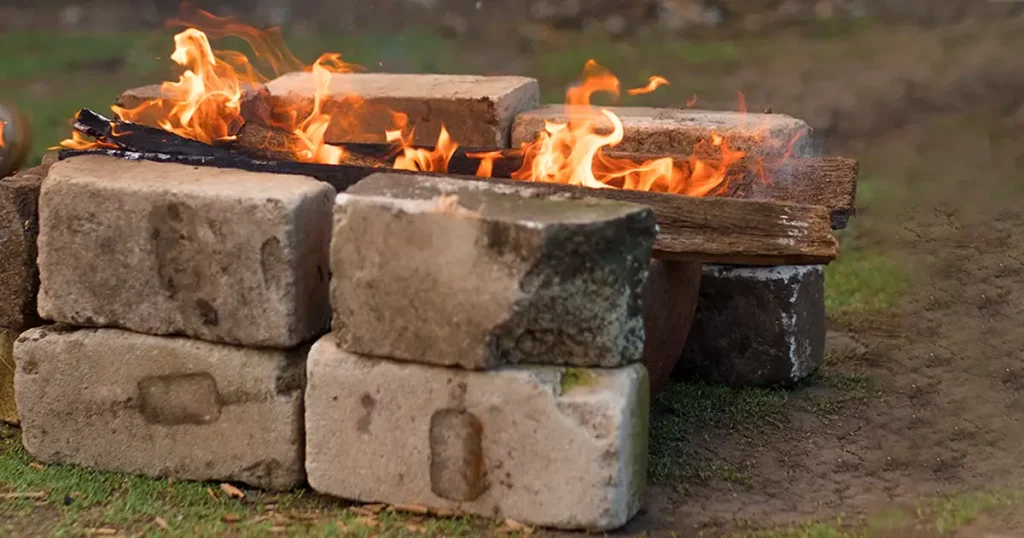
There are many ways that you can set up your fire. It is important to create an area that will hold your very heavy pot over the flame. Fill the pot up with water and place it on the fire grate (the part that holds the pressure canner on top of the fire) to make sure it is steady and sits evenly.
A basic setup is fire-safe blocks, usually made out of cinder, with a fire grate over the top. Set your pot about 1 foot (30 centimeters) above the fire coals. If you have a bigger surface area, you can have your pot of boiling water to fill the raw pack jars on the fire as well. If not, you will need to fill the jars inside and transport them to the pressure canner.
A piece of sheet metal of the proper size to place over the fire for regulating the temperature may be handy.
Having a flat work surface close by to set utensils, jars, or other tools is also useful.
Gather Wood
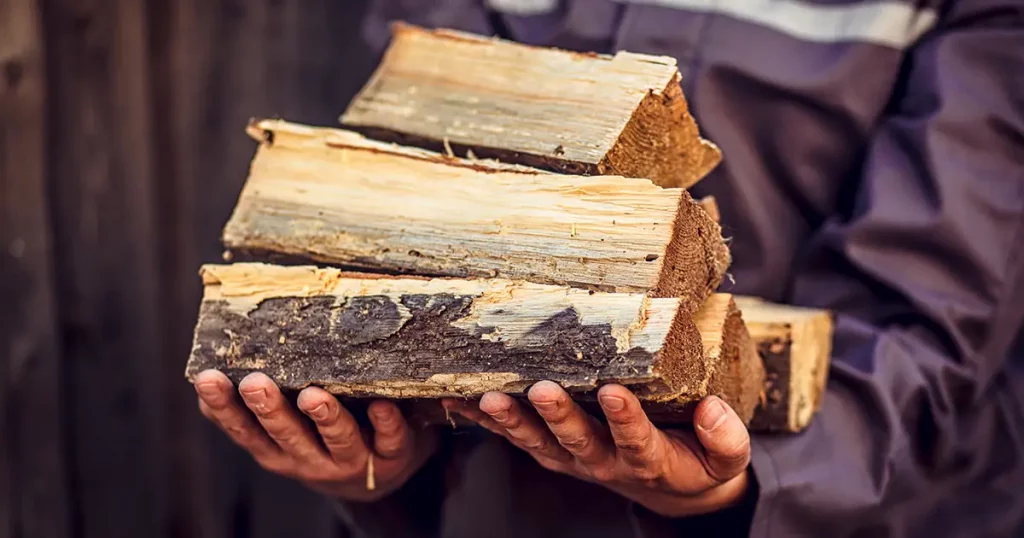
You need to cut, dry, and have plenty of wood pieces. Use pieces that are 2-3 inches (5-8 centimeters) in diameter and that are easy to fit under your fire grate. Choose wood that will catch fire quickly and burn steadily. Keep a pile of wood close to the fire for easy feeding.
There’s no set amount or type of wood, but if you run out, your fire may diminish as you are rushing around trying to find more. Use the wood you’ve got on hand but be aware that different varieties of wood burn at different rates and temperatures.
Preparing Your Pressure Canner
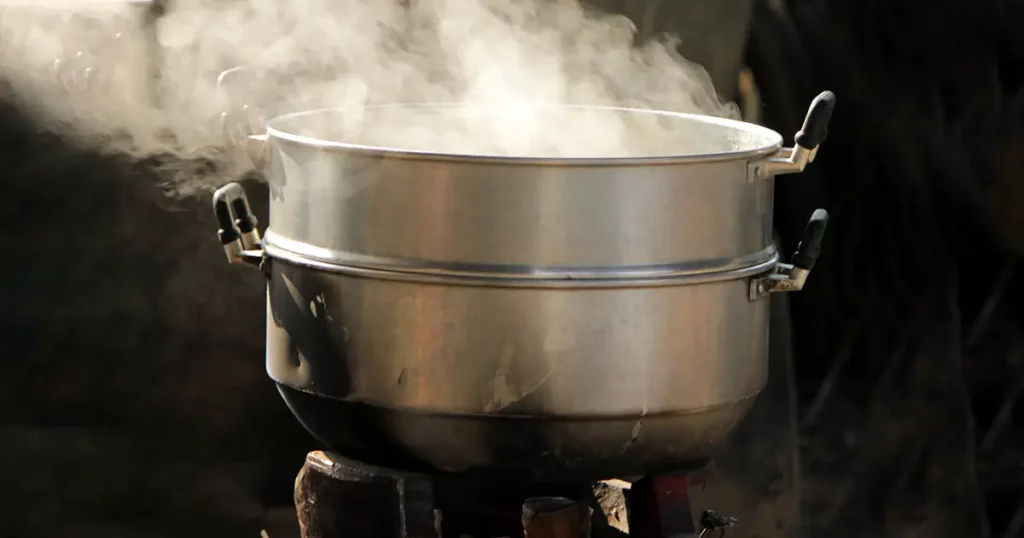
Place your pressure canner on the fire grate over the fire and add water. Put the lid on to avoid ashes flying into the pot. You are not sealing the pot at this point, and your vent valve should be clear. Do not add the regulator.
Start the fire. Heat your water to near-boiling. This is going to take a little bit as your fire heats up and the wood starts to burn. You want to add your jars to the water when the temperature of the water is about the same as the pressure in the jars. Read more about this in How Pressure Canners Work.
Add the Jars
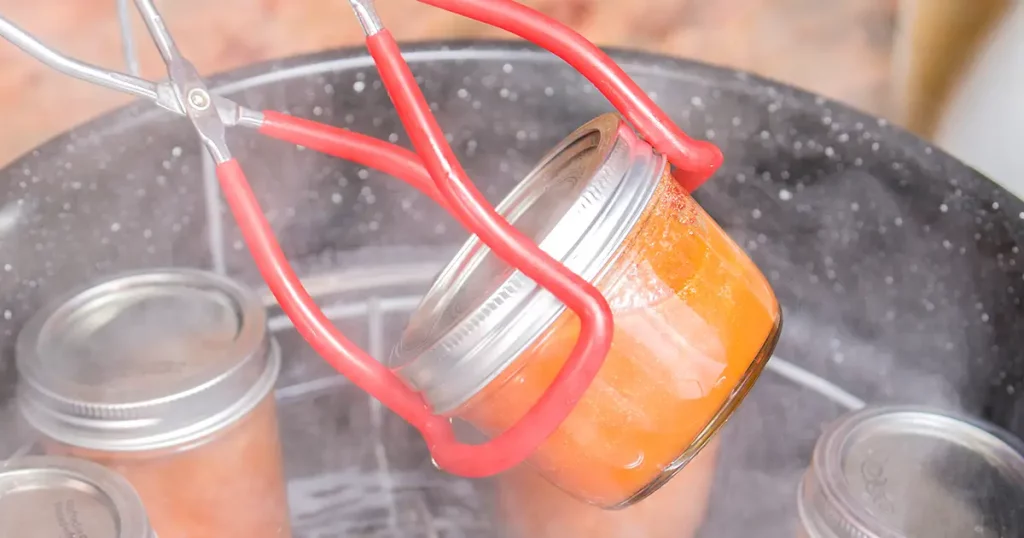
Prepare your jars inside with boiling water and bring them out to the pressure canner only when it is time to add them to the pot. If your pressure canning water is boiling on the open flame as well, raw pack your foods inside, bring the jars outside, and add boiling water there. Make sure ash from the fire doesn’t get into your jars.
Remove the lid from the pressure canner and add the jars. Use caution as you are standing over an open flame – it is VERY hot and can be smoky.
Replace the lid, seal it per the manufacturer’s instructions, and let the valve vent for the required time. Check your manual, but this is often around 10 minutes. Add your regulator and wait for it to start jiggling before starting any timer.
When choosing processing times and required pressure, the same rules apply for high-altitude pressure canning over any other heat source. Read our Pressure Canning Altitude Chart for more information.
Regulating Heat
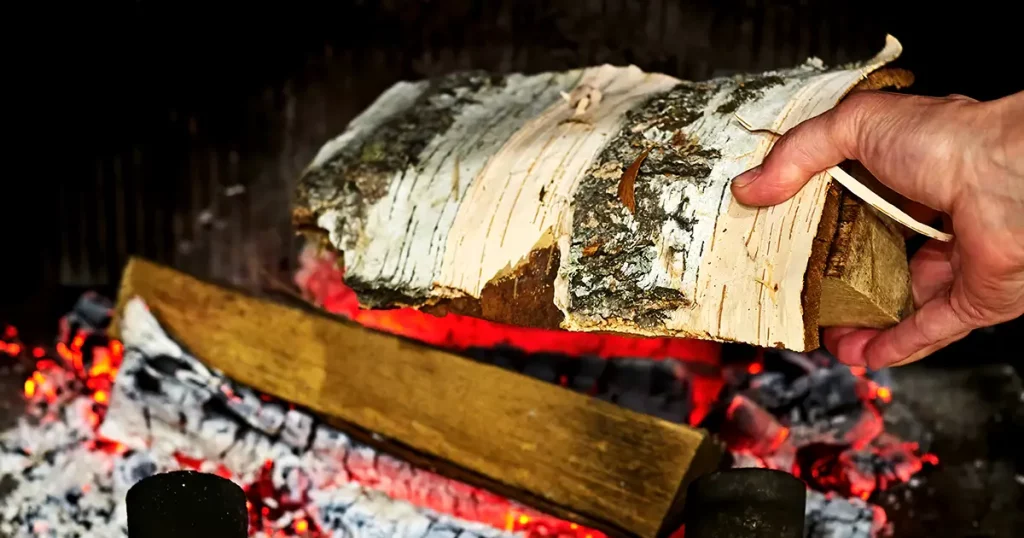
The key to pressure canning is a steady temperature to build up pressure and keep it there.
Regulating temperature can be tricky, but here are a few tips:
- Add wood if the temperature starts to drop.
- Put the piece of sheet metal over the fire if it is too hot and remove it if you need more heat. Pouring water over the sheet metal can also cool the fire if it is too hot as well.
- Do not pour water on the fire to control the flames. You might just put the fire out!
Remain beside the fire all the time and pay close attention to your regulator. You will learn the subtle changes in the sound of the pressure weights over time.
If the temperature drops too low and the regulator stopped jiggling, it is best to start the timer again.
Turning Off the Heat
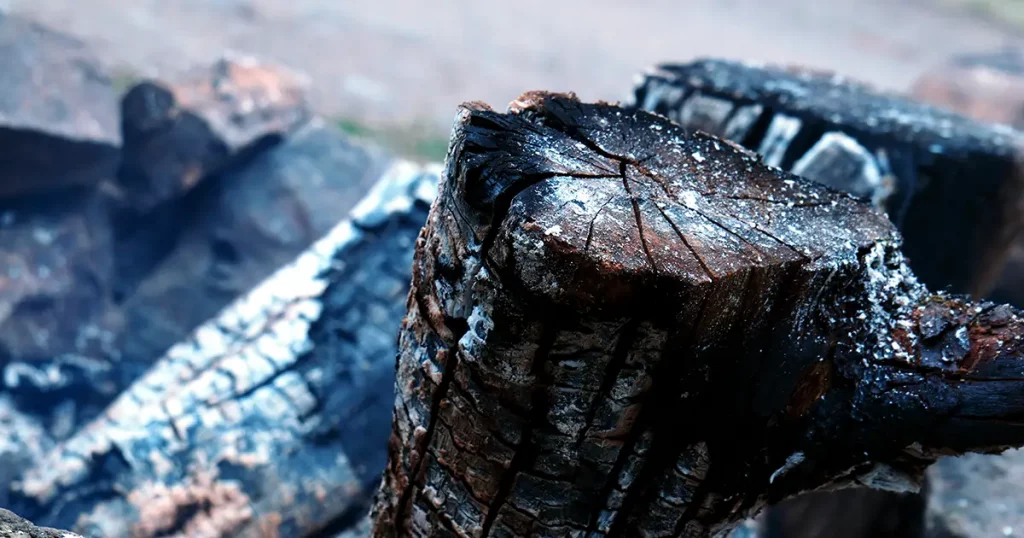
There are 2 options to stop the processing time.
The 1st is to move the pressure canner off the heat. This is not recommended as it is hot and heavy.
The 2nd option is to douse the fire. Watch out for smoke and flying ashes.
Leave the pressure canner to cool off and de-pressure naturally. This may take quite a while and it’s best not to try and speed up the process.
Once the pot and fire are completely cool, remove the lid and use a jar lifter to remove the jars onto a flat surface. Check the seals and remove the rings before placing them in your pantry.
Try Pressure Canning on an Open Fire
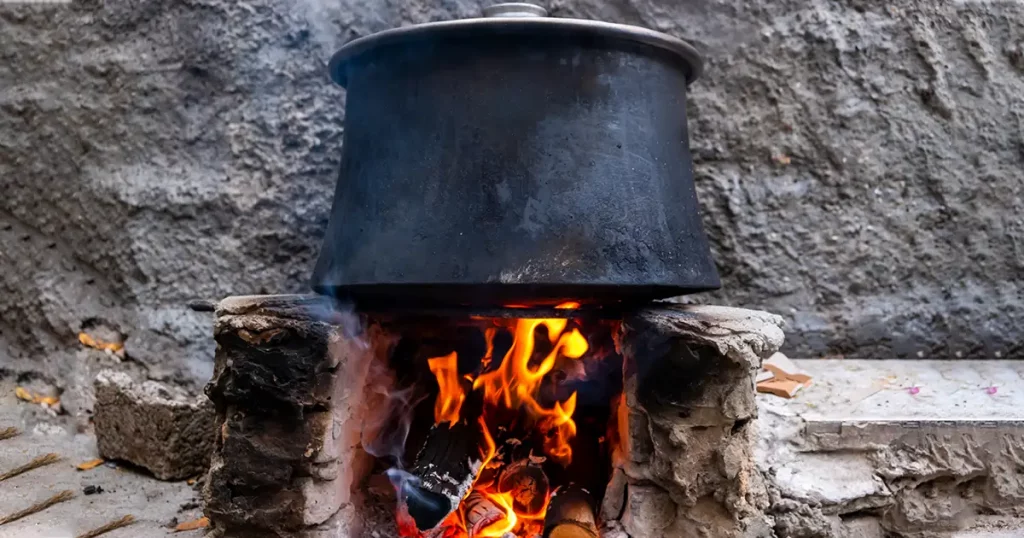
Pressure canning over an open flame takes a little more work and patience, but the results are the same. Choosing which pressure canners can be used over an open fire is important, as well as your setup, and techniques. With a bit of practice, you’ll be a pro!
If you don’t have a yard, a source of wood, or the desire to try canning over a fire, stick to the tried-and-true techniques of pressure canning indoors. Start with our Pressure Canning Guide and continue to our blog to find new recipes.
If you do have experience canning over an open flame, share your experience in the comments below.
